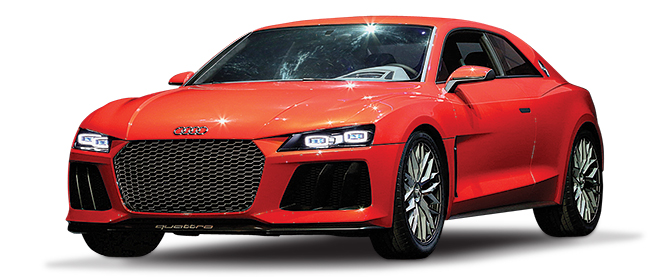5 ways technology is revolutionizing your ride
Go driverless, link a smartwatch, take a selfie—it’s the dawn of a new auto era
Getty Images; Getstock; Mercedes-Benz
Share

The driverless car: This long-promised dream (or nightmare, depending on your take) is drawing nearer. BMW recently showed off a 6 Series that can do laps at high speed while its driver sits back, hands off the wheel. Google’s Chauffeur program has successfully piloted six cars autonomously for 500,000 km. Meanwhile, Audi road-tested cars that take over control when travelling at less than 60 km/h. Perhaps the biggest advancement in Audi’s technology: Where the complex system of radars, lasers, cameras and sensors once filled up a trunk, the computer brain required to pilot a car is now small enough to fit in the glove box. Among the biggest hurdles now is the law: After all, who’s to blame when a driverless car hits someone?
A car-share program: It was inevitable—selfies for drivers. The Performance Data Recorder coming to the new Corvette Stingray boasts a telemetry system that tracks engine RPM, acceleration, braking, speed and G-force. Owners can also record audio and video (at 720p) of their drives and play it back on a display that’s drawn straight from the latest racing video games. Drivers can upload and share their videos on Facebook and Twitter for bragging rights.
Google Glass integration: It may seem like a novelty device, but the way car companies are embracing Google Glass–the latest (and oddest-looking) in wearable computing–it appears to be gaining traction. Hyundai announced it would enable Google Glass wearers to see, while driving, diagnostic information such as fuel levels and the location of the nearest gas station. However, some states are working toward banning the device, saying it constitutes a distraction similar to a smartphone. In California, one woman was caught speeding while wearing it, and was charged with distracted driving.
Bright lights: Who hasn’t wanted to shoot laser beams from his car? Audi announced it’s ready to produce headlights that use LED lights for low beams, and laser diodes for high, which the company claims are three times brighter than normal headlights and capable of lighting up objects as far as five football fields away. The tech is ready, but North America may not be, yet: Transportation officials still haven’t approved Audi’s previous brighter headlights, which aren’t nearly as bright.
Watch the road: Thanks to Pebble, a start-up founded by some enterprising grads from the University of Waterloo, Mercedes-Benz drivers will be able to link to their cars through a smartwatch that will provide performance data and other information about their vehicles’ status. The watch serves as a second screen for the German automaker’s app, displaying information such as how much gas is left in the tank and if the car doors were left unlocked.